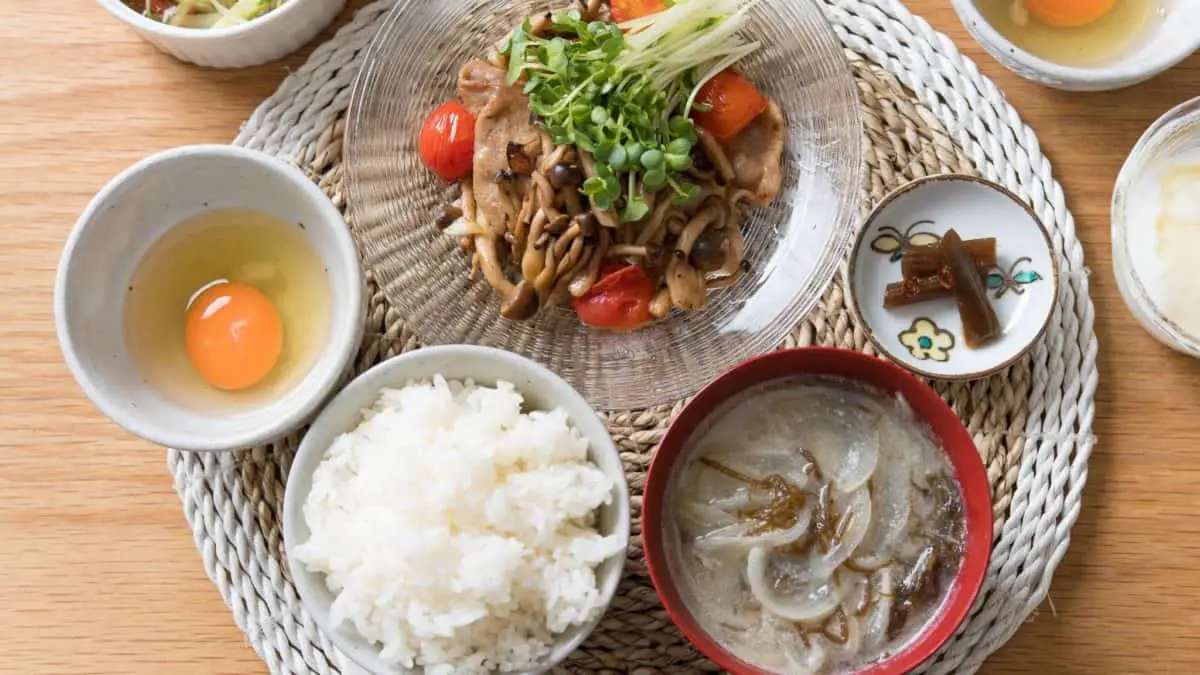Japanese food: Traditional Meets Fusion Western Influences
Japanese food is a mix of traditional and foreign flavors, due to the country’s openness to foreigners and their cultures over centuries.
Japan has been heavily influenced by other countries, which can be seen in its food. However, Japanese cuisine still retains its traditional flavors and cooking methods.
Let’s look at how it blends traditional and foreign influences.

Japanese cuisine, particularly sushi, has now become popular throughout the world.

Check out our new cookbook
Bitemybun's family recipes with complete meal planner and recipe guide.
Try it out for free with Kindle Unlimited:
Read for freeIn this post we'll cover:
What is traditional Japanese food?
Traditional Japanese cuisine is based on rice, which is cooked and then served with other dishes. These can be either cooked (e.g. vegetables or meat) or raw (e.g. fish).
There is a strong emphasis on seasonality in traditional Japanese cuisine. This means that dishes are made using ingredients that are in season. This results in fresher and more flavorful dishes.
In addition, traditional Japanese cuisine uses a lot of soy-based products, such as soy sauce and tofu. These add umami (a savory flavor) to dishes.
How are dishes served in Japanese culture?
Traditionally, Japanese cuisine is served on small plates called o-hashi. These are placed in the center of the table so that everyone can share.
It is also common to eat with chopsticks in Japan. These are used to pick up small pieces of food, which are then eaten one at a time.
Japan’s long history of openness to foreigners and their cultures
Chinese food first came to Japan in the 8th century, during the Tang Dynasty. At that time, Japan was a closed country, and only the ruling class was allowed to interact with foreigners. However, the Japanese were intrigued by Chinese culture, and many of its customs were eventually adopted by the Japanese.
One of these customs was Chinese cuisine. The ruling class was impressed by the variety and flavors of Chinese food, and they began to import it into Japan. As a result, Japanese cuisine began to incorporate many Chinese flavors and cooking methods.
So Japanese food is highly influenced by other Asian food cultures.
Western influences on Japanese cuisine
The first Western influence on Japanese cuisine came in the 16th century, when the Portuguese arrived in Japan. They introduced a variety of new foods, such as beef, pork, potatoes, and chili peppers.
These ingredients were not commonly used in Japanese cuisine at that time, but they quickly became popular. The Portuguese also introduced tempura, a type of fried food. This is now a common dish in Japanese cuisine.
In the 19th century, Japan opened its doors to foreigners and began to modernize. As a result, Western culture and cuisine became more widespread in Japan.
One of the most popular Western dishes in Japan is curry. This was introduced by the British in the 19th century, and it quickly became a favorite among the Japanese.
Nowadays, Japanese cuisine is a mix of traditional and foreign influences.
American influences on food in Japan
More recently, American culture has also had an impact on Japanese cuisine. Fast food restaurants, such as McDonald’s and Kentucky Fried Chicken, are now common in Japan.
But before that, The Japanese adopted teppanyaki as a way to serve American-style steak. This involves cooking meat on a metal plate, and it is often served with vegetables.
American soldiers in Japan
When Japan opened its doors to foreigners in the 19th century, American culture began to spread throughout the country. This was especially true after World War II, when American troops occupied Japan.
The American soldiers brought with them a variety of new foods, such as hamburgers and ice cream. These foods quickly became popular among the Japanese and are now considered staples of Japanese cuisine.
In addition, the American soldiers introduced new cooking methods to Japan. One of these methods was grilling on a flat griddle, which is now a common way to prepare food in Japan called teppanyaki.
Grilling was done in Japan long before that and the yakiniku type of grilling was actually brought to Japan much earlier and is of Korean influence.
Conclusion
As you see, there’s a lot of history behind Japan’s food culture and the influences of so many other countries to get to its unique and popular cuisine.
Check out our new cookbook
Bitemybun's family recipes with complete meal planner and recipe guide.
Try it out for free with Kindle Unlimited:
Read for freeJoost Nusselder, the founder of Bite My Bun is a content marketer, dad and loves trying out new food with Japanese food at the heart of his passion, and together with his team he's been creating in-depth blog articles since 2016 to help loyal readers with recipes and cooking tips.

